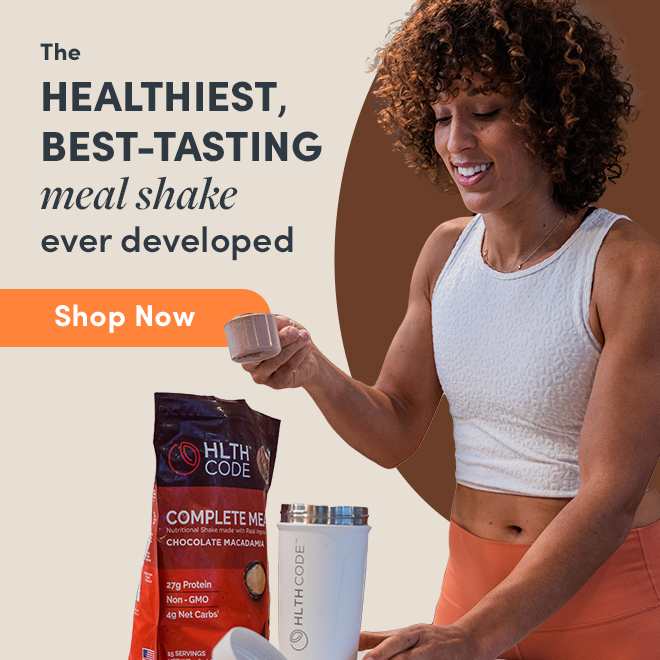The Best (and Worst) Protein Sources
The following is an edited transcription based on the above video. Any statements or claims about the possible health benefits conferred by any foods or supplements have not been evaluated by the FDA and are not intended to diagnose, treat, cure or prevent any disease.
There are a lot of protein sources. Three of the best sources of protein are whey, egg whites, and collagen. The cost to include them in a finished product is very high because they’re natural, have almost zero processing and are vastly superior to other protein sources.
The pressure to compromise with proteins is significant. In fact, many meal replacement shakes or bars and proteins out there don’t use whey, egg whites and collagen because of the cost. Some of the most popular meal replacements and protein shakes in the marketplace use plant-based protein. The truth is that it’s great business for these companies to use plant proteins because they are incredibly cheap and it’s seen as almost virtuous to use these heavily-processed plant protein sources.
Unfortunately, the average consumer has been lead to believe that a plant protein is equal or even superior to animal-based proteins like whey, egg whites and collagen. And that is false on every possible metric by every objective measurement of human metabolism.
Animal proteins beat plant proteins every time. There’s not a single instance where plant protein is superior to human health (unless there are legitimate allergies). You not only are getting an inferior source of amino acids, you are also compromised in your digestion of those proteins, because plant proteins are an odd source of protein for humans and you end up getting things from the plants that you don’t want.
For example, if you’re using pea protein; peas are so deficient in protein, that you have to take a thousand or more peas and distill and process them to get one small serving of protein. Although the amino acid profile is still subpar, you are also getting these things called anti-nutrients. These are molecules that are inherent in these plant-based proteins. Things like phytic acids or tannins or trypsin inhibitors that are physically preventing your intestines from digesting those already subpar proteins.
Further, when you distill and process the incredible amount of soy, rice, peas or seeds to get the tiny amounts of protein, you also get the minerals that they have been enriched with from the soil they’re growing in. While we need minerals in our diet, these plant proteins require so much material to process that they end up concentrating heavy metals like lead and arsenic, which remain in the body and can accumulate over time to potentially lethal levels.
Of course the alternative is just to focus on natural animal proteins that have almost zero processing. Though they are more expensive, they are simply nutritionally superior. which is a consideration that every consumer ought to be aware of when you’re pricing out meal replacement shakes or bars. If it is a plant-based protein, they wanted to put that protein in their product because it costs them so little; certainly far less than whey, egg whites and collagen.
Please note: Those who choose a plant-based diet are certainly getting an improvement over the Standard American Diet that most people consume. The human clinical science is crystal clear that there are superior protein sources to unnatural plant-based proteins.
For HLTH Code, we wanted to develop one product, and it had to be absolutely “no-compromise.” It couldn’t be complicated by trends or the temptation to use cheap ingredients. It had to be absolutely supported by the best possible research to help people get as healthy as physically possible.
This article is for informational and educational purposes only. It is not, nor is it intended to be substitute for professional medical advice, diagnosis, or treatment and should never be relied upon for specific medical advice.



















